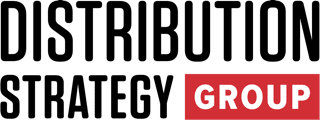Every distribution executive knows the drill. A complex RFQ hits your inbox at 4:47 PM on a Friday. Your team scrambles through spreadsheets, cross-references pricing matrices, checks inventory levels across multiple locations, and manually calculates volume discounts. If you’re lucky and your info is really good, by Monday morning, you’ve got an accurate quote—but your competitor already won the business with a response delivered Saturday morning.
Too often, distributors resort to using their most important and expensive resource—the outside sales rep—to complete these quotes, meaning they aren’t selling. They’re buried in administrative work that could be automated, unable to focus on the relationship building and strategic selling that actually drives revenue.
I’ve lived this reality firsthand. In the not-too-distant past, I was charged with putting together a quote and sourcing team that had little information to work from. We cobbled together a pretty good process with ERP data and outside source data, but it was still very manual. And, while better than a branch person doing the quote, some complex quotes still took us up to eight hours to get back to a customer.
This process has radically changed over the past five years.
During those years building quote and sourcing teams, I watched talented people spend 80% of their time hunting through systems, validating data, and manually assembling quotes that should have been automated. These weren’t low-skilled tasks—they required deep product knowledge and customer understanding—but the process buried that expertise under layers of administrative work.
The best sourcing professionals I hired could analyze complex customer requirements, identify alternative solutions, and negotiate win-win outcomes. Instead, they spent most of their day playing data archaeologist, digging through disconnected systems to piece together basic pricing information. It was like hiring a skilled surgeon and asking them to spend most of their time filing paperwork.
This scenario plays out thousands of times daily across wholesale distribution, and it’s costing companies more than just individual deals. It’s systematically eroding competitive position in a market where speed and accuracy have become table stakes.
The Hidden Cost of Manual Quote Processes
Research from leading technology providers reveals a sobering reality: Distributors lose over 40% of potential wins when quotes take longer than 24 hours to deliver. Even more striking, 50% of buyers choose the vendor that responds first, regardless of minor price differences.
But the damage extends beyond lost sales. Manual quote processes create cascading inefficiencies throughout your operation. In my experience building these teams, I discovered that even skilled professionals were spending 75% of their time on data preparation rather than the strategic work they were hired to do—relationship building, solution development, and competitive analysis.
The organizational cost is staggering. You’re paying senior-level salaries for junior-level data entry. Customer service representatives field endless status calls. Operations teams constantly firefight expedited orders that could have been planned properly with faster quote turnaround. Meanwhile, your best people become frustrated with mundane tasks that don’t leverage their expertise.
The math is unforgiving: If your average quote takes 48 hours and generates $15,000 in revenue, every quote represents a coin flip where heads means you win the business and tails means you’ve invested time and resources with zero return. When I calculated the true cost of our manual processes—including fully loaded labor costs, opportunity costs, and customer churn—the numbers were shocking.
The Automation Advantage
Forward-thinking distributors are transforming this equation through intelligent quote and order automation. These systems don’t just speed up existing processes—they fundamentally reimagine how distributors engage with customers.
Having built teams around manual processes, I now see automation as the great equalizer. It eliminates the grunt work that buries talent and unleashes the strategic thinking that drives real value. Modern automation platforms integrate directly with ERP systems, pulling real-time inventory data, current pricing, and customer-specific terms. They automatically apply volume discounts, calculate complex rebate structures, and even suggest alternative products when inventory runs low.
The transformation is profound. The same sourcing professionals who once spent their days buried in spreadsheets can now focus on analyzing customer requirements, identifying cross-sell opportunities, and developing long-term account strategies. Complex multi-line quotes that once took hours now generate in minutes, freeing up time for the selling that actually differentiates your business.
The benefits cascade throughout the organization. Sales teams redirect their energy from spreadsheet manipulation to relationship building and strategic account development. Customer service transforms from reactive problem-solving to proactive relationship management.
More Than Speed: The Accuracy Factor
While speed grabs attention, accuracy drives profitability. Manual processes introduce error rates that can devastate margins. A misplaced decimal point, forgotten freight calculation, or outdated pricing can turn a profitable quote into a money-losing proposition.
Automated systems eliminate these risks through built-in validation and approval workflows. They ensure every quote reflects current costs, appropriate margins, and approved terms. They automatically flag unusual requests for human review while processing routine quotes seamlessly.
This accuracy advantage compounds over time. Clean data feeds better business intelligence, enabling more sophisticated pricing strategies and customer segmentation. Consistent quoting processes build customer trust and reduce post-sale disputes.
The Strategic Imperative
Order and quote automation isn’t just an operational improvement—it’s a competitive weapon. Distributors who can quote faster and more accurately gain first-mover advantage in bidding situations. They can pursue more opportunities without proportional increases in headcount. They build reputations for responsiveness that translate into stronger customer relationships and higher win rates.
From my experience managing these processes manually, I can attest that the human element remains crucial—but it should be focused on strategy, not data entry. The best quote and sourcing teams combine automated efficiency with human insight, using technology to eliminate routine tasks while empowering people to focus on complex problem-solving and relationship building.
The technology has reached an inflection point where implementation costs have dropped dramatically while capabilities have expanded exponentially. Cloud-based solutions eliminate the need for extensive IT infrastructure. Pre-built integrations with major ERP systems reduce implementation time from months to weeks.
The Path Forward
The question isn’t whether to automate quote and order processes—it’s how quickly you can implement effective solutions. Every day spent on manual processes is a day your competitors potentially gain ground.
The most successful implementations start with clear process mapping, identifying the highest-impact automation opportunities first. They prioritize integration with existing systems and ensure proper training for teams who will interact with new tools.
The transformation extends beyond technology. It requires rethinking roles, redefining success metrics, and realigning incentives around customer responsiveness rather than internal efficiency.
Your Next Move
The distributors who thrive in 2026 and beyond will be those who master the balance between human expertise and automated efficiency. They’ll use technology to eliminate routine tasks while empowering teams to focus on strategic value creation.
Ready to transform your quote and order processes? Join distribution leaders at the Profit & Productivity Summit, November 10-12 in Chicago, where you’ll discover proven strategies for implementing automation that drives real results. Learn from industry experts who’ve successfully navigated this transformation and network with peers facing similar challenges.
The future of distribution belongs to those who act decisively. Don’t let manual processes hold your company back when the tools for transformation are available today.
As Chief Operations Officer of a Distribution Strategy Group, I'm in the unique position of having helped transform distribution companies and am now collaborating with AI vendors to understand their solutions. My background in industrial distribution operations, sales process management, and continuous improvement provides a different perspective on how distributors can leverage AI to transform margin and productivity challenges into competitive advantages.

